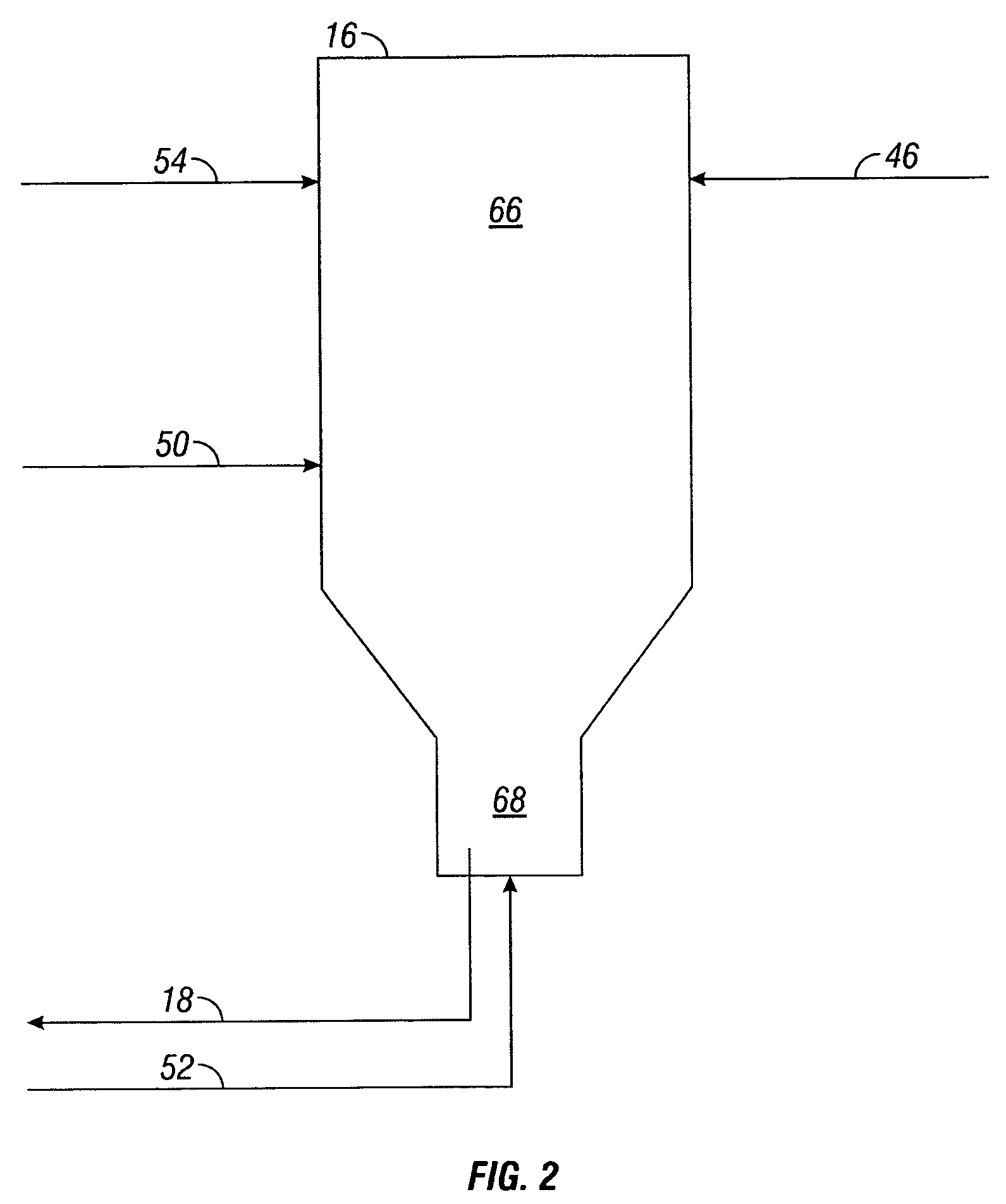Method and apparatus for making a middle distillate product and lower olefins from a hydrocarbon feedstock
a technology of hydrocarbon feedstock and distillate product, which is applied in the direction of hydrocarbon oil treatment products, lighting and heating apparatus, furnaces, etc., can solve the problems of not teaching that a portion of freshly regenerated catalyst may bypass the gasoline re-, patents fail to recognize numerous various means, and middle distillates is not high enough to achieve the effect of maximizing the yield of lower olefins
- Summary
- Abstract
- Description
- Claims
- Application Information
AI Technical Summary
Benefits of technology
Problems solved by technology
Method used
Image
Examples
example i
[0076]This Example I demonstrates the yield benefits that result from the use of a ZSM-5 additive in combination with a middle distillate selective cracking catalyst in the catalytic cracking of a gasoline feedstock within an intermediate cracking reactor system.
[0077]An experimental pilot system was used to conduct the experiments. The pilot system consisted of six sections including a feed supply system, a catalyst loading and transfer system, a riser reactor, a stripper, a product separation and collecting system, and a regenerator. The riser reactor was an adiabatic riser having an inner diameter of from 11 mm to 19 mm and a length of about 3.2 m. The riser reactor outlet was in fluid communication with the stripper that was operated at the same temperature as the riser reactor outlet flow and in a manner so as to provide essentially 100 percent stripping efficiency. The regenerator was a multi-stage continuous regenerator used for regenerating the spent catalyst. The spent cata...
example ii
[0082]This Example II demonstrates the yield benefits resulting from the use of steam in the catalytic cracking of a gasoline feedstock in an intermediate cracking reactor system utilizing a middle distillate selective cracking catalyst in combination with a ZSM-5 additive.
[0083]FIGS. 7, 8, 9, and 10 present a summary of the data obtained from conducting the cracking experiments in the same experimental pilot system describe in the above Example I. In these cracking experiments, a middle distillate (or diesel) selective cracking catalyst was used in combination with a ZSM-5 additive in the cracking a hydrocarbon feedstock. The comparisons presented in these FIGs. are for a process operation in which steam was introduced along with the hydrocarbon feedstock and for a process operation in which no steam was introduced along with the hydrocarbon feedstock.
[0084]As may be seen from FIG. 7, the process that utilizes steam provides for a better coke selectivity than the process that does ...
PUM
| Property | Measurement | Unit |
|---|---|---|
| weight percent | aaaaa | aaaaa |
| surface area | aaaaa | aaaaa |
| surface area | aaaaa | aaaaa |
Abstract
Description
Claims
Application Information
 Login to View More
Login to View More - R&D
- Intellectual Property
- Life Sciences
- Materials
- Tech Scout
- Unparalleled Data Quality
- Higher Quality Content
- 60% Fewer Hallucinations
Browse by: Latest US Patents, China's latest patents, Technical Efficacy Thesaurus, Application Domain, Technology Topic, Popular Technical Reports.
© 2025 PatSnap. All rights reserved.Legal|Privacy policy|Modern Slavery Act Transparency Statement|Sitemap|About US| Contact US: help@patsnap.com



